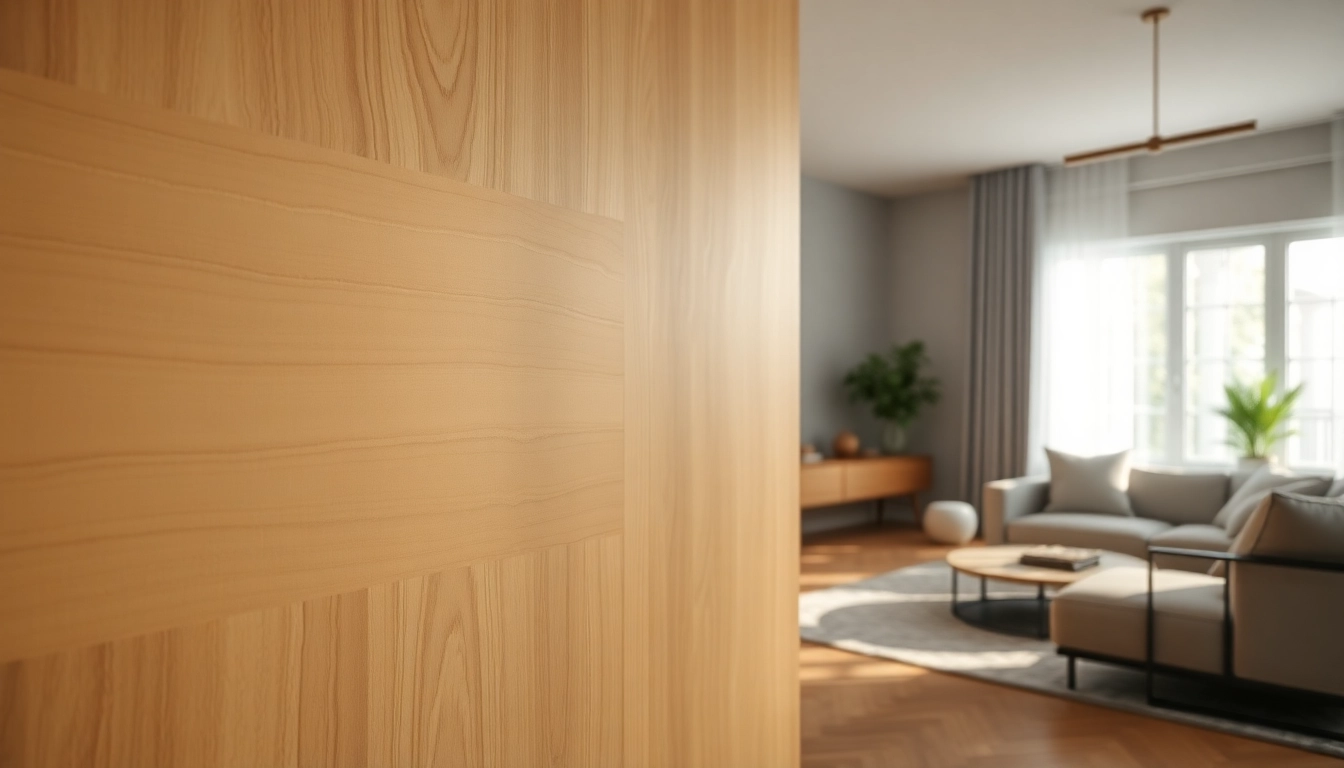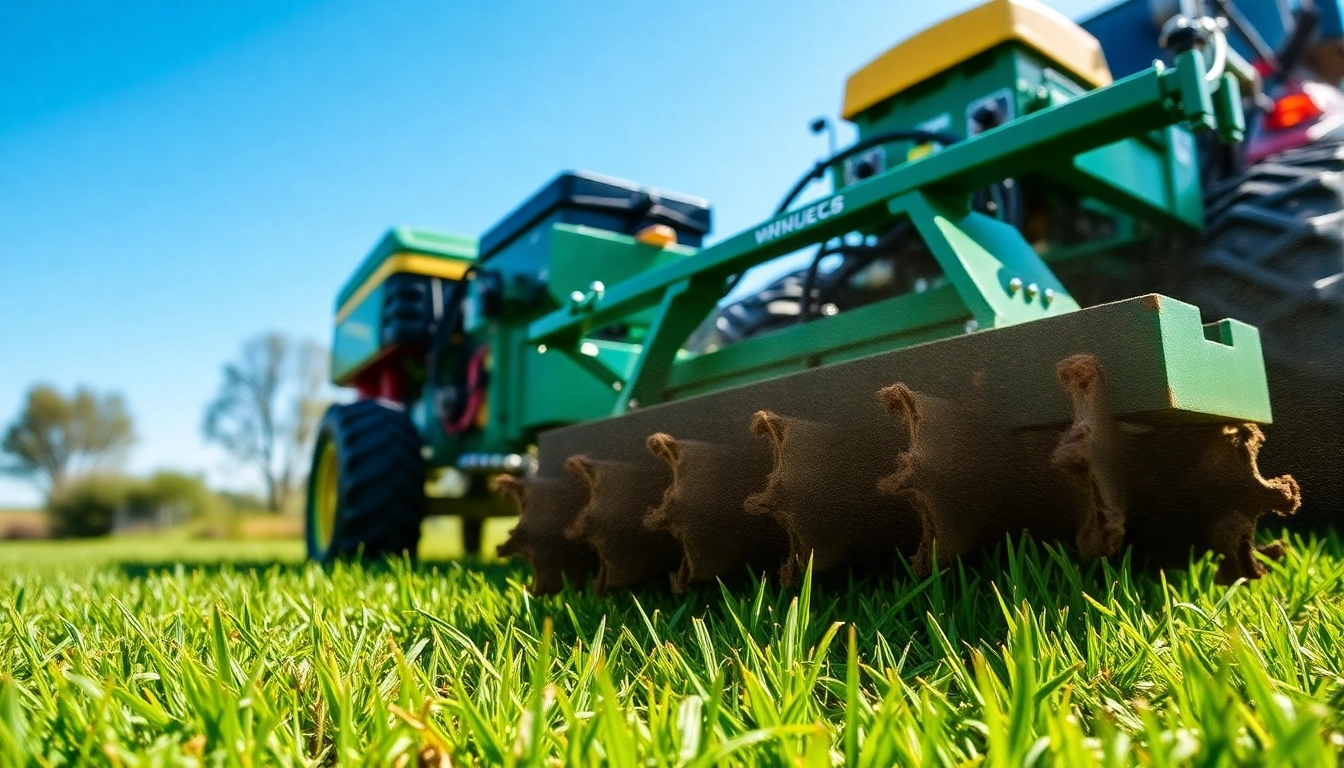Understanding Sheet Veneer
What is Sheet Veneer?
Sheet veneer is a thin slice of wood, typically less than 3 millimeters thick, that is manufactured by peeling or slicing logs into sheets. This versatile material is used primarily in cabinetry, furniture, and wall paneling, offering the beautiful appearance of solid wood at a fraction of the cost. Unlike solid wood, which can be expensive and prone to warping, sheet veneer provides a stable and consistent surface while still showcasing the natural grain and character of the wood.
With a vast array of species, finishes, and textures available, sheet veneer can enhance both contemporary and traditional designs, catering to various aesthetic preferences and functional requirements.
Types of Sheet Veneer Available
There are several types of sheet veneer, each offering different characteristics and applications. The most common types include:
- Natural Veneer: This type is made from real wood and showcases the natural grain patterns and colors, making it an excellent choice for high-end projects.
- Backed Veneer: This veneer has a backing made of paper or fabric, enhancing its strength and making it easier to handle and install.
- Reconstituted Veneer: Created from man-made materials, these veneers mimic the appearance of natural wood while maintaining uniformity in color and grain.
- Dyed Veneer: This type has been artificially colored to achieve vibrant and unique shades that are not typically found in natural wood.
Understanding the differences among these types is essential in selecting the right veneer for your specific project, as each has its advantages and intended applications.
Benefits of Using Sheet Veneer in Design
Incorporating sheet veneer into your design can yield numerous benefits:
- Cost-Effectiveness: Sheet veneer allows for the use of beautiful wood finishes without the high price tag associated with solid wood, making it an economical choice for those on a budget.
- Eco-Friendly: By using less wood, sheet veneer contributes to sustainable design practices. This is especially important in today’s environmentally-conscious marketplace.
- Versatility: With various finishes and styles available, sheet veneer can be utilized in countless applications, from elegant furniture to modern wall installations.
- Design Flexibility: The lightweight nature and ease of installation of sheet veneer provide designers with greater flexibility to experiment with decorative patterns and textures.
These benefits make sheet veneer an attractive option for designers and homeowners looking to enhance their spaces without compromising quality or aesthetic value.
How to Choose Sheet Veneer for Your Project
Considerations for Selecting Quality Sheet Veneer
When selecting sheet veneer, quality should be a top priority. Here are essential factors to consider:
- Thickness: Choose a veneer thickness that suits your application. Thicker veneers tend to be more durable, while thinner options might be more flexible for intricate designs.
- Wood Species: Different species offer unique colors and grain patterns. Select a wood type that aligns with your design vision.
- Finish and Texture: Consider whether you need a pre-finished veneer or one that will be stained or treated after installation. The texture can also affect the visual impact of the veneer.
- Source and Certification: Ensure the veneer comes from a reputable source, ideally with environmental certifications for assurance of sustainable practices.
Color and Grain Matching Techniques
Achieving a cohesive design requires attention to color and grain matching. Here are some techniques:
- Use Samples: Request samples from suppliers to evaluate how different veneers look in your space, taking lighting into account.
- Grain Direction: Pay attention to how the grain runs; matching grain direction in adjoining panels creates a seamless appearance.
- Layering Colors: Consider using a combination of veneers that complement each other in tone and texture for added depth.
Adopting these techniques can greatly enhance the visual appeal and cohesion of your design project.
Cost Considerations and Budgeting
Budgeting for sheet veneer involves understanding the costs associated with materials and installation. Consider the following:
- Material Costs: Sheet veneer prices vary by species and thickness. Research and compare prices across suppliers to ensure you’re getting a fair deal.
- Installation Expenses: Factor in the cost of contracting professionals if you’re not experienced with veneer installation. DIY options can save money but may require additional investment in tools and training.
- Maintenance Calculations: Consider the long-term costs of maintaining and potentially repairing your veneer, as well as how this may influence your choice.
A thorough understanding of these factors can assist in establishing a realistic budget for your project, ensuring that you achieve the desired look within your financial constraints.
Installation of Sheet Veneer: Tips and Techniques
Preparation Steps Before Installation
Proper preparation can significantly impact the success of your sheet veneer installation. Follow these steps:
- Surface Preparation: Ensure the substrate surface is clean, smooth, and free of dust or debris to provide adequate adhesion for the veneer.
- Temperature and Humidity: Keep the installation area within recommended temperature and humidity levels to prevent warping or movement of the veneer post-installation.
- Plan Layout: Visualize the layout before beginning the installation, noting grain direction and how each piece will fit together to create a cohesive finish.
Installation Methods: Pros and Cons
There are several methods for installing sheet veneer, each with its benefits and downsides:
- Contact Cement: This strong adhesive option is quick and allows for immediate bonding. However, it requires precise placement as it sets quickly and is difficult to adjust once applied.
- Wood Glue: A more forgiving option, wood glue allows for repositioning before it fully cures, but it may take longer to dry and bond effectively.
- Vacuum Pressing: This method applies even pressure across the surface, resulting in excellent adhesion. However, it requires specialized equipment and can be a more costly investment.
Choosing the right installation method depends on your skill level, the complexity of your project, and your budget.
Common Mistakes to Avoid When Installing Sheet Veneer
To achieve a successful installation, be mindful of these common mistakes:
- Ignoring Surface Preparation: Failing to properly prepare the surface can lead to weak adhesion and unsightly results.
- Incorrect Adhesive Selection: Using the wrong adhesive can compromise the installation; ensure the adhesive matches the materials and installation conditions.
- Poor Alignment: Taking time to align grains and seams correctly can avoid the need for costly repairs down the line.
Avoiding these pitfalls can streamline the installation process and contribute to a polished finished product.
Maintenance and Care of Sheet Veneer
Cleaning and Upkeep Tips
Maintaining the beauty of sheet veneer involves regular cleaning and care:
- Use Gentle Cleaners: Opt for pH-balanced or wood-safe cleaners to avoid damaging the finish.
- Avoid Excess Water: Excess moisture can warp or damage veneer, so use a damp cloth rather than soaking the surface.
- Regular Dusting: Dust the surface regularly to prevent dirt buildup and maintain its appearance.
Repairing and Refreshing Your Sheet Veneer
Over time, sheet veneers may require repair or refreshing. Here are some strategies:
- Minor Scratches: Use wood filler or a touch-up marker that matches your veneer to conceal small imperfections.
- Refinishing: For more extensive wear, sanding the surface lightly and applying a new coat of finish can revitalize the veneer.
- Professional Restoration: If damage is severe, consider consulting a professional for repair options to ensure the integrity of the veneer is maintained.
Longevity and Durability Expectations
The longevity of sheet veneer depends on several factors:
- Quality of Materials: Higher-quality veneers made from durable species and with appropriate backing typically last longer.
- Environmental Conditions: Extreme temperature changes or humidity can accelerate wear, so maintaining a stable environment is crucial.
- Usage: Areas subject to heavy traffic or wear may require more frequent maintenance, impacting overall longevity.
By adopting mindful care practices, you can extend the life of your sheet veneer installations and keep them looking fresh.
Innovative Applications of Sheet Veneer in Modern Design
Unique Ideas for Sheet Veneer Usage
Sheet veneer is versatile and can creatively enhance various applications. Consider these innovative ideas:
- Accent Walls: Create striking visual impact by covering a single wall with sheet veneer to serve as a focal point in a room.
- Furniture Design: Utilize sheet veneer in furniture to achieve intricate patterns such as chevrons or herringbone, elevating standard pieces to custom designs.
- Ceiling Treatments: Sheet veneer can also be applied to ceilings, adding depth and warmth to the overhead space, often overlooked in design.
Combining Sheet Veneer with Other Materials
For a modern touch, combining sheet veneer with other materials can create stunning effects:
- Metal Accents: Pairing sheet veneer with brushed metals can lead to striking contrasts, enhancing both industrial and sophisticated settings.
- Glass Features: Integrate glass elements with sheet veneer for a sleek, modern look, particularly in cabinetry and partitions.
- Textiles: Combining soft fabrics with sheet veneer in upholstery offers comfort alongside the elegance of wood finishes.
Case Studies: Successful Sheet Veneer Installations
Looking at successful applications of sheet veneer can provide inspiration:
- Residential Projects: A contemporary home utilized sheet veneer on kitchen cabinetry, achieving a minimalist aesthetic while staying within budget and by emphasizing functionality.
- Commercial Spaces: A high-end restaurant incorporated sheet veneer in wall paneling to provide warmth and inviting ambiance while maintaining durable surfaces that withstand wear.
- Retail Displays: In a boutique, custom showcases made of sheet veneer combined with glass effectively highlighted products while simultaneously enhancing the store’s overall atmosphere.
These examples underscore the versatility and design potential of sheet veneer across various applications.


